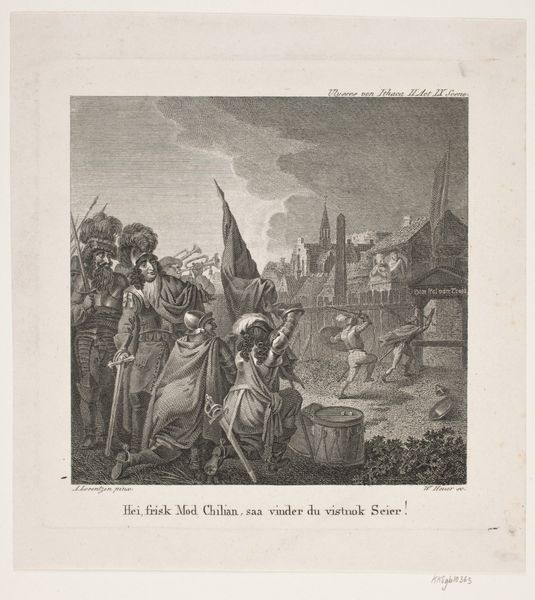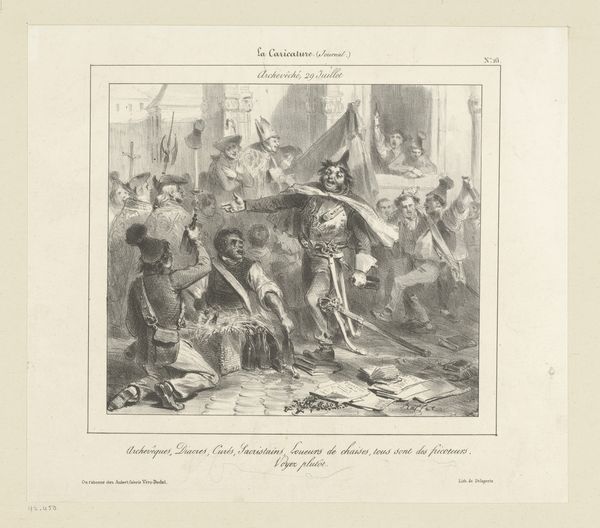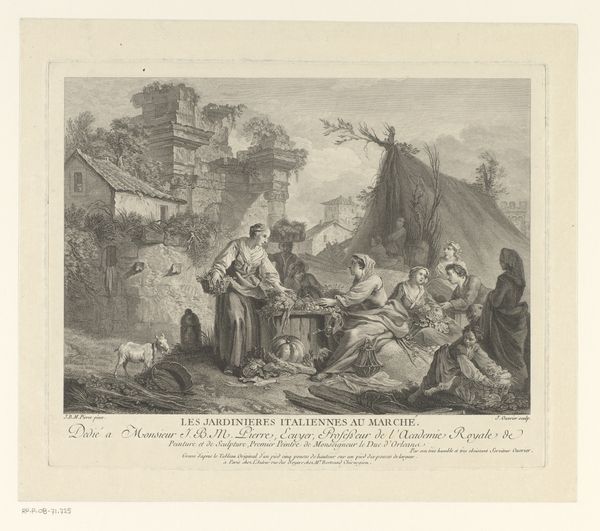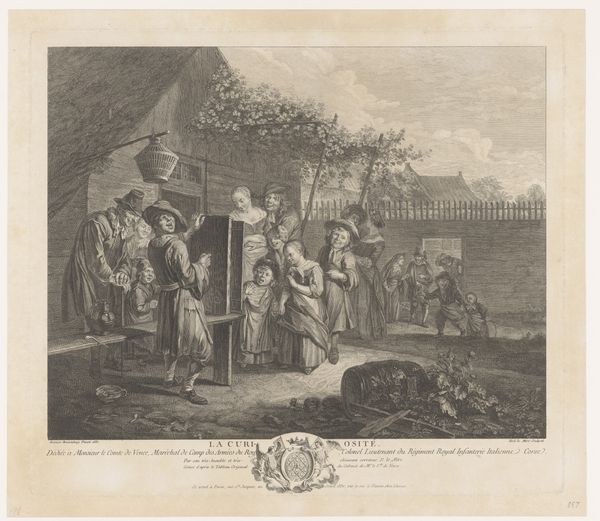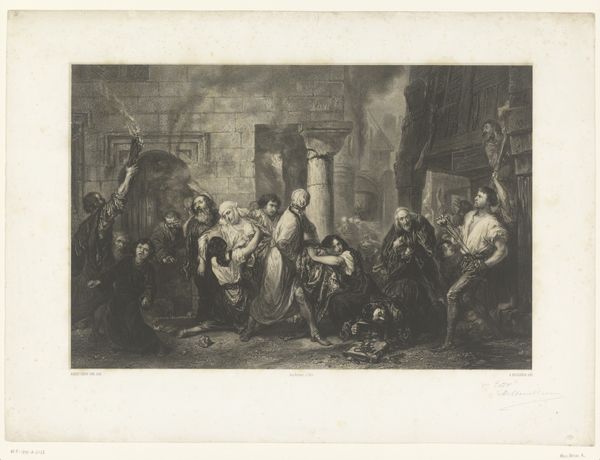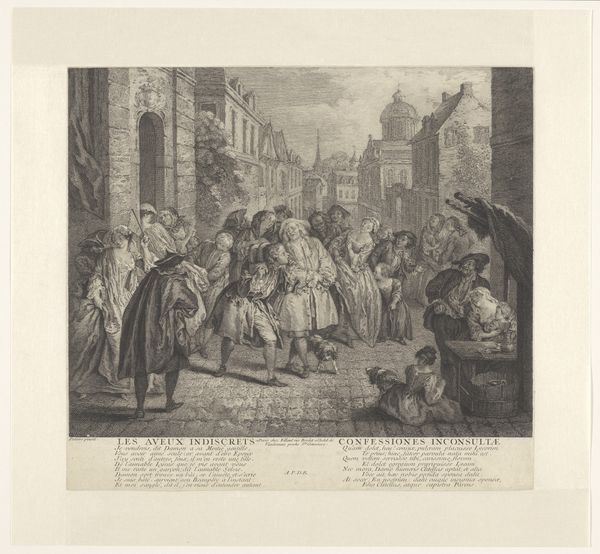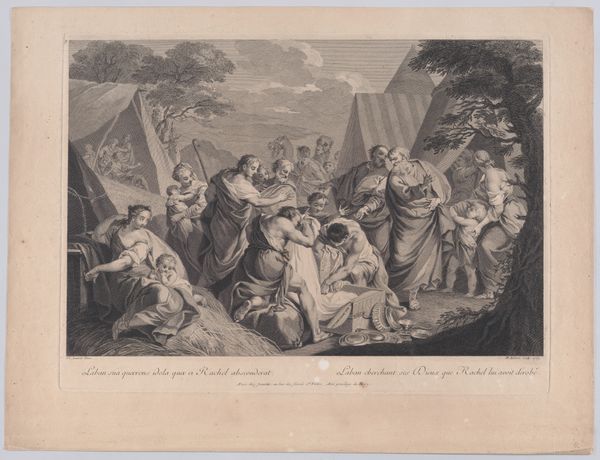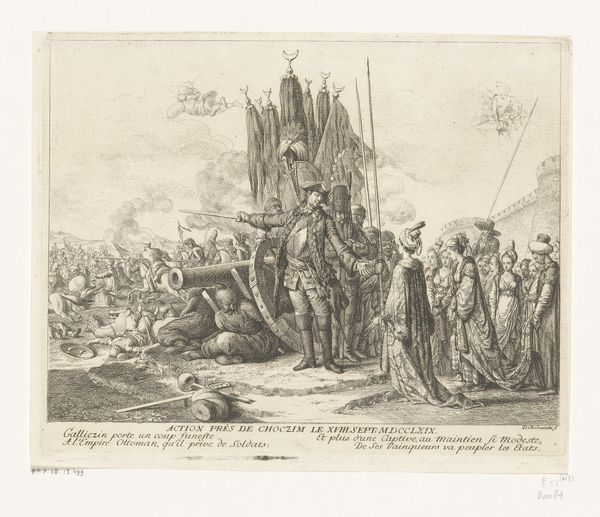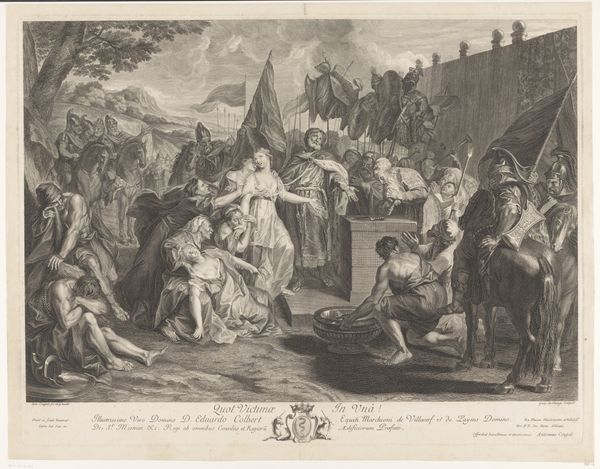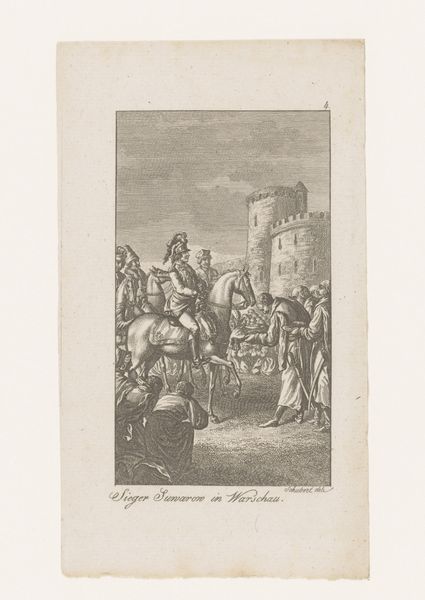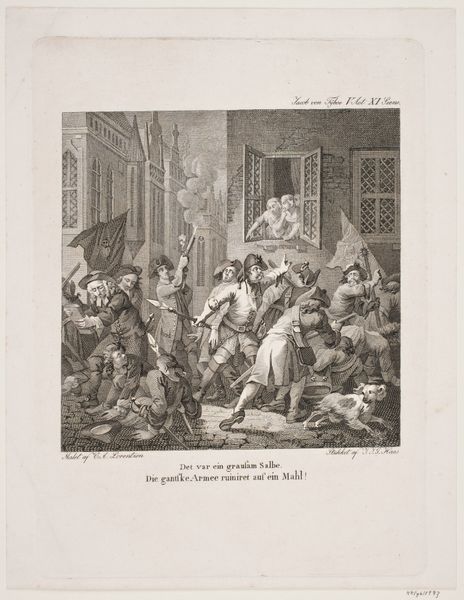
Dimensions: 188 mm (height) x 185 mm (width) (bladmaal)
Editor: This is Wilhelm Heuer's "Ulysses von Ithacia, II akt, 9. scene", an 18th-century engraving held at the SMK. The print feels… theatrical. There are so many figures posed within the scene. What are your thoughts, in terms of its history? Curator: Considering the theatrical staging, the question I have is this: what public is being addressed? Prints like this disseminated visual culture widely, even if literacy was limited. It’s not just about illustrating Homer. Look at the exaggerated costumes and the way the scene is structured. Who benefits from this interpretation of Ulysses? Editor: I see what you mean. It feels almost propagandistic now that you mention it, like a carefully constructed narrative meant to sway an audience. But how do you make that connection to its original public? Curator: Notice the dramatic action paired with those Renaissance-inspired costumes. There's a deliberate linking to classical authority, but re-packaged. Whose authority are they reinforcing? Who controlled the narrative then? Think about the social hierarchies, the political climate in the 18th century. Visual messaging through prints solidified status, moral instruction, perhaps even a kind of aspirational identity for its viewers. Does this reading make sense with what you see in the artwork? Editor: Definitely. The exaggerated gestures, the city-like backdrop… It elevates Ulysses and associates his struggles with ideals that would have been politically charged then. This isn't just mythology, it's history being rewritten to suit an agenda. Curator: Precisely. The visual rhetoric of prints was often employed to solidify particular ideologies or social roles. Looking closely unveils whose interests it was designed to serve. Editor: I’ve learned so much more than simply a description, I will need to rethink all History Paintings from now on!
Comments
No comments
Be the first to comment and join the conversation on the ultimate creative platform.
